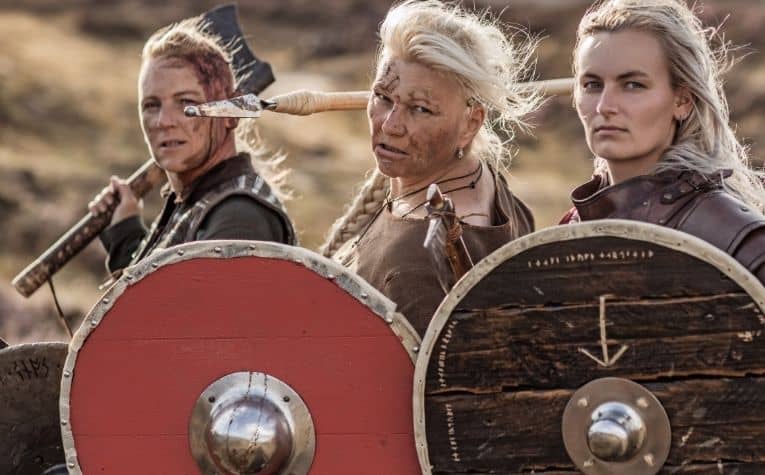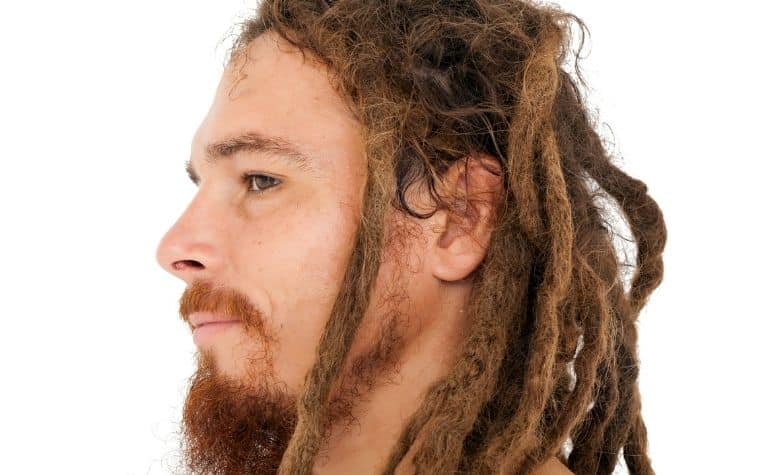Of all the historical figures that have come and gone through the centuries, the Vikings rank among the most legendary.
With a larger-than-life reputation, the Vikings made their mark through violent conquests, courageous exploration, and ruthless trading.
They were also an attention-drawing presence wherever they went, thanks to unique physical attributes, including their hairstyles.
Many Viking men sported a hairstyle known today as a “reverse mullet,” whereby hair was allowed to grow long in the front but was cut short or even shaved in the back of the head.
Viking women typically had long hair that may have been braided or tied in buns while daily tasks were being performed.
The Vikings are considered one of the preeminent warrior societies that have ever lived.
Yet, they are celebrated today not only for conquering much of Northern Europe in dominating fashion but also for how they looked while doing it, including the way they styled their hair.
Keep reading to learn more.
Also see Did the Vikings Wear Dreadlocks? to learn more.

What Were Common Hairstyles for Viking Men?
Contrary to popular opinion, the Vikings were not all blond-haired and blue-eyed.
While some certainly fit the stereotypical mold with golden locks, many Vikings, particularly those hailing from the southern and western parts of Scandinavia, had hair of varying colors (more on this later).
Similarly, there was no single hairstyle to which all Vikings conformed.
As far as male Viking hairstyles, hair length could vary from long to short to shaved, and there were a number of coifs that were sported during the Viking Age.
The more popular and notable hairstyles for Viking men included:
- Long hair (neck to shoulder-length) was a popular hairstyle for Norse men during the Viking Age, although some would question the practicality of having long hair when engaging in hand-to-hand combat
- Well-known wood carvings (Oseberg Ship) and tapestries (Bayeux Tapestry) depict Viking warriors with short hair on top and the sides and back of the head either shaved or cut close to the skin (Also see Did the Vikings Have Dreadlocks?)
- Danish Vikings were known for their unique hairstyle, which entailed long hair on top and in front (e.g., the bangs) and very short hair in the back. This Danish-style “do” is often described as a reverse mullet
- Taking the reverse mullet one step further was a leader of the Viking Rus (Vikings of Swedish descent who migrated eastward to modern-day Russia) named Sveinald, who famously had a completely shaved head except for a longish lock of hair on one side of his head [1]
As with their clothing and worldly possessions, hairstyles often reflected the wearer’s social class.
Since slaves (the lowest of Viking social classes) wore their hair very short, if not completely cropped, this particular style was avoided by Viking men. [2] (Also see Did the Vikings Have Long Hair?)
In addition to the hairstyles they wore, many Viking men were apparently quite particular with hair color as well.
Not all Norsemen were born with blond hair, but that did not stop brunettes and redheads from achieving the golden locks that were seemingly in fashion throughout the Viking Age.
By bathing themselves with a very strong soap made with lye, the Vikings were able to bleach their hair (and beards, too) blond. [3] (Also see How Did the Vikings Bathe?)
Also see What Did the Vikings Look Like? to learn more.

What Were Common Hairstyles for Viking Women?
Unlike their male counterparts, it does not appear that Viking women enjoyed as much variety in the hairstyles that they wore.
Most Norse women during the Viking Age had long hair, and depending on their social status and the nature of their daily routines (e.g., whether they had physically demanding tasks to perform), they likely styled it in one of several ways:
- One particularly popular hairstyle for Viking women was to tie their long hair into a single knot at the back of the head, with the free end hanging down like a ponytail [4]
- Viking women were known to adorn their hair with colored ribbons, which were woven or braided in with the hair [5] (Also see Did the Vikings Wear Braids?)
Other popular hairstyles for Viking women during the Middle Ages served to indicate their marital status. For example:
- Long flowing or braided hair was often an indication that the wearer was unmarried (sometimes of such length that the ends could be tucked into a belt)
- Married Viking women typically wore their long hair tucked into a bun at the back of the head, and wealthier members of Viking society likely had ornately decorated caps that could be placed over their hair buns as a show of their social status [6] (Also see 15 Facts About Viking Women)
What Did the Vikings Use To Cut Their Hair?
With different hairstyles in vogue during the Viking Age, particularly among the male population, there would have been a need to cut hair to lengths varying from long to short to shaved.
As a warrior society, the Vikings obviously had their pick of sharp-edged implements like knives, daggers, and even swords, axes, and various farm tools, with which they could cut their hair. (Also see Did the Vikings Have Red Hair?)
While these certainly would have gotten the job done for an impromptu trim in the field (both the battle and farming varieties), they may not have been ideally suited for cutting hair into the hairstyles that were in vogue during the Viking Age.
Fortunately for the Vikings, they had the perfect hair-cutting tool at their disposal in the form of scissors.
Among the artifacts recovered from Viking burial sites are various tools used for domestic chores, including those used for making clothes which most Viking women did themselves.
For tasks like cutting fabric into workable pieces, trimming leather, or snipping thread, scissors were used. [7]
During the Viking Age, scissors may very well have been the ultimate multitasking tool around, including for giving haircuts.
The scissors used by the Vikings had the following characteristics:
- Viking scissors likely originated from ancient Roman designs
- It is likely that Viking scissors were made from iron but probably required frequent sharpening
- Early versions used a u-shaped design which may have evolved into a c-shaped design [8]
Also see Were There Black Vikings? to learn more.
Does History Channel Get Viking Hairstyles Right?
The ratings-busting popularity of the History Channel’s binge-worthy series Vikings is a testament to the Vikings’ enduring celebrity so many centuries after the Viking Age came to an end in 1066.
While loosely based on historical events, the TV series also exercises many creative liberties for the sake of producing engaging television.
Included among these fictionalized portrayals are how Viking men and women are depicted on the show.
According to some historians, the Vikings, like so many other contemporary portrayals of Norsemen, goes a bit too far in the way it presents Viking hairstyles, particularly those worn by its male characters. Some argue, for instance:
- There is no conclusive evidence that Viking men ever shaved any parts of their heads, particularly Norsemen who lived in the 9th century (the show is supposedly set around the year 800)
- The notion that the Vikings wore reverse mullets and similar hairstyles combining long and short hair is based on wood carvings and tapestries, which are ambiguous at best without additional corroborating evidence
- Even assuming that the famed 11th century Bayeux Tapestry accurately depicts Viking hairstyles, its subjects are Normans who descended from Vikings and settled in western France nearly one hundred years prior (thus, the argument goes, the Normans are not true Vikings as they eventually became French). [9]
Along the same vein, some scholars question whether the descriptions of supposed firsthand observers of Viking hairstyles that provide the basis for modern depictions are accurate as far as interpretation and even translation. [10]
Ultimately, there is no definitive source upon which to rely, and as the creator of the Vikings series has himself acknowledged, no one will ever know for certain what they looked like, let alone how they styled their hair.
Conclusion
Whether the Vikings had long or short hair or shaved heads, the question marks surrounding their hairstyles only continue to add to their mystique.
Also see Female Viking Hairstyles to learn more.
References:
[1] Source
[2] Source
[3] Source
[4] Source
[5] Source
[6] Source
[7] Source
[8] Source
[9] Source
[10] Source
